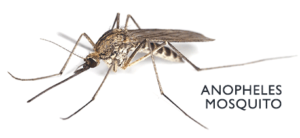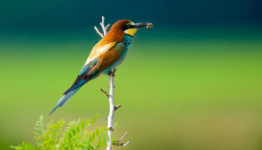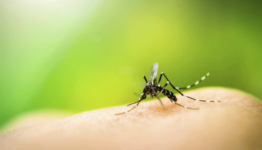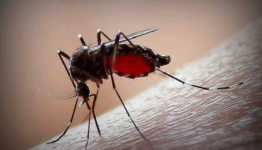 Of the 41 genera of mosquitoes worldwide, the Anopheles is one of them. Over 430 species of Anopheles mosquitoes have been recorded across the world. The Anopheles mosquito can be found in virtually every corner of the world except Antarctica. Before reaching adulthood, the Anopheles mosquito goes through 4 stages: egg to larva, to pupa before then maturing into an Adult. The first three stages occur on water, and upon reaching adulthood, the anopheles would develop wings strong enough to fly around with.
Of the 41 genera of mosquitoes worldwide, the Anopheles is one of them. Over 430 species of Anopheles mosquitoes have been recorded across the world. The Anopheles mosquito can be found in virtually every corner of the world except Antarctica. Before reaching adulthood, the Anopheles mosquito goes through 4 stages: egg to larva, to pupa before then maturing into an Adult. The first three stages occur on water, and upon reaching adulthood, the anopheles would develop wings strong enough to fly around with.
The female Anopheles is capable of laying between 50 and 200 eggs instantaneously. Female Anopheles mosquito when they lay their eggs do so individually, and would do so on the surface of standing water. This is unlike most other species of mosquito which lay their eggs in glued groups known as egg rafts. In warmer environments, it takes just 2 to 3 days for mosquito eggs to hatch, while it is three weeks in cold regions. The larvae’s breathing is aided by specialized organs located on their body, and to breathe, they have to come up to the surface of water. Mosquitoes at larvae stage feed mostly on bacteria, algae and other tiny water organisms. After the larvae stage comes the pupa stage. The pupae breathes through the aid of respiratory trumpet, a respiratory organ located on the body of the pupae. The pupa stage lasts 2 to 3 days, after which adult mosquito develops.
Anopheles mosquitoes, both the male and female feeds on the nectar of certain plants. The female needs to feed on blood to develop her eggs. After sucking in sufficient blood, the female anopheles would fly to a safe place to properly digest the blood and lay her eggs when they develop. She would then lay her eggs on water at the end of her gestation period before then proceeding on another search for blood meal.
The Anopheles has a lot of physical similarity with other mosquitoes. However, they differ from other species of mosquitoes in 4 ways. First, while other species of female mosquito lay their eggs in groups known as rafts, the female anopheles does so individually. Second, in place of proboscis, the anopheles mosquito has a pair of palps on its mouth. Third, when feeding on the blood of its host, the female anopheles will position herself at an angle of 45 degrees. This is unlike other species of mosquitoes which feed at near parallel position.
Anopheles mosquitoes are vectors of malaria, a deadly disease which claims the lives of millions every year. Malaria is most common in third world countries and tropical regions, and mostly kills children and pregnant women whose immune system are weak against the virus that causes malaria. Aside malaria, the female anopheles transmits other diseases like filariasis and certain kinds of arboviral diseases.
Every year, a tiny fraction of Americans are treated of malaria. In most cases, the sufferers are individuals coming from countries and regions where malaria is prevalent. It’s been reported that the United States is at the brink of suffering an outbreak of malaria as more anopheles mosquitoes continue to flood the South.









